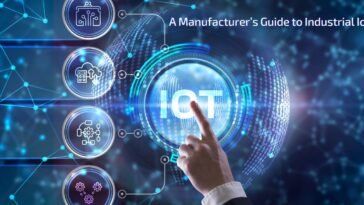Industrial maintenance has evolved dramatically in recent years, driven by technological advancements and changing operational demands. Modern manufacturing facilities can no longer rely on traditional reactive maintenance approaches. Instead, they must embrace innovative technologies and strategies that enhance efficiency, reduce downtime, and improve overall equipment effectiveness.
The integration of digital technologies into industrial maintenance practices is not just a trend—it’s a necessity for staying competitive in today’s rapidly changing industrial landscape. Companies that adapt to these maintenance innovations position themselves for sustainable growth and operational excellence.
The Digital Transformation of Industrial Maintenance
Industry 4.0’s Impact on Maintenance Operations
The Fourth Industrial Revolution has fundamentally transformed how organizations approach industrial maintenance. Industry 4.0 technologies enable manufacturers to create smart factories where maintenance processes are data-driven, predictive, and highly efficient.
According to recent McKinsey research, companies utilizing advanced maintenance technologies report significant improvements in equipment reliability and cost reduction. This digital transformation combines Information Technology (IT) and Operational Technology (OT) networks to create seamless data exchange systems that support intelligent maintenance decisions.
Technology’s Role in Modern Manufacturing
Manufacturing companies increasingly rely on technological capabilities to enhance their maintenance processes. Cloud computing, Big Data analytics, and Internet of Things (IoT) devices work together to create comprehensive maintenance ecosystems that provide real-time insights and predictive capabilities.
5 Game-Changing Trends in Industrial Maintenance
1. Virtual Technology Integration
The adoption of virtual technology in industrial maintenance has accelerated significantly, driven by safety requirements and operational efficiency needs. Virtual diagnostics and remote troubleshooting capabilities allow maintenance teams to:
- Perform accurate diagnostics from any location
- Access real-time equipment data through sensors and AI systems
- Reduce on-site maintenance requirements while maintaining safety standards
- Implement augmented reality solutions for complex repair procedures
Key Benefits:
- Enhanced worker safety through remote monitoring
- Reduced travel costs and response times
- Improved diagnostic accuracy through AI-powered analysis
- 24/7 monitoring capabilities
2. Additive Manufacturing Revolution
3D printing technology is revolutionizing spare parts management and equipment maintenance. Additive manufacturing enables facilities to:
- Produce replacement parts on-demand
- Reduce inventory costs and storage requirements
- Create custom components for legacy equipment
- Minimize equipment downtime through rapid part production
The global additive manufacturing market is projected to experience substantial growth, with experts predicting widespread adoption for mass production applications by 2030. This technology particularly benefits industries with complex machinery and hard-to-source components.
3. Internet of Things (IoT) Connectivity
IoT implementation in industrial maintenance creates interconnected systems that provide unprecedented visibility into equipment performance. Smart sensors and cloud connectivity enable:
- Real-time equipment monitoring and data collection
- Automated alerts for potential issues
- Enhanced safety through continuous environmental monitoring
- Optimized maintenance scheduling based on actual equipment condition
IoT Applications in Maintenance:
- Temperature and pressure monitoring systems
- Vibration analysis for rotating equipment
- Energy consumption tracking
- Environmental condition monitoring
4. Advanced Data Analytics and Predictive Maintenance
Data collection and analytics have become cornerstones of modern industrial maintenance strategies. Facilities generate vast amounts of sensor data that, when properly analyzed, provide valuable insights for:
- Predicting equipment failures before they occur
- Optimizing maintenance schedules based on actual equipment condition
- Identifying patterns and trends in equipment performance
- Making data-driven decisions about equipment replacement and upgrades
Wireless sensor networks monitor various parameters including temperature, pressure, vibration, and energy consumption. This continuous data stream feeds predictive analytics systems that can forecast maintenance needs with remarkable accuracy.
Benefits of Predictive Maintenance:
- Reduced unplanned downtime
- Lower maintenance costs
- Extended equipment lifespan
- Improved operational efficiency
5. Maintenance as a Service (MaaS)
The emergence of Maintenance as a Service represents a fundamental shift in how organizations approach equipment maintenance. Cloud computing capabilities enable service providers to offer comprehensive maintenance solutions that include:
- Detailed performance statistics and operational reports
- Equipment lifetime predictions based on usage patterns
- Context-aware maintenance information including videos, instructions, and VR visualizations
- Integrated IT and business systems configuration
MaaS solutions are particularly valuable for specialized machinery where in-house expertise may be limited or cost-prohibitive to maintain.
Preparing Your Organization for Industrial Maintenance Evolution
Building a Technology-Ready Workforce
Successfully implementing modern industrial maintenance requires more than just technology—it demands a skilled workforce capable of leveraging these tools effectively. Organizations should:
- Invest in comprehensive training programs for maintenance staff
- Develop digital literacy across all levels of the organization
- Create cross-functional teams that bridge IT and maintenance operations
- Establish continuous learning programs to keep pace with technological advances
Strategic Implementation Approaches
Successful adoption of advanced maintenance technologies requires careful planning and strategic implementation:
Phase 1: Assessment and Planning
- Evaluate current maintenance practices and identify improvement opportunities
- Assess existing technology infrastructure and integration capabilities
- Develop a comprehensive implementation roadmap with clear milestones
Phase 2: Pilot Programs
- Implement small-scale pilot projects to test new technologies
- Gather data and feedback to refine implementation strategies
- Build internal expertise and confidence in new systems
Phase 3: Full-Scale Deployment
- Roll out successful pilot programs across the organization
- Integrate new technologies with existing systems and processes
- Establish metrics and KPIs to measure success and ROI
The Future of Industrial Maintenance
Emerging Technologies on the Horizon
Several emerging technologies promise to further transform industrial maintenance:
- Artificial Intelligence and Machine Learning: Advanced algorithms that can predict failures with increasing accuracy
- Digital Twins: Virtual replicas of physical equipment for simulation and testing
- Robotics and Automation: Autonomous maintenance systems for routine tasks
- Edge Computing: Processing data closer to equipment for faster response times
Industry-Specific Applications
Different industries are adopting maintenance innovations at varying rates:
- Energy Sector: Focus on renewable energy systems and smart grid maintenance
- Oil and Gas: Emphasis on safety and environmental compliance
- Aerospace: High-reliability requirements driving advanced predictive systems
- Manufacturing: Integration with production systems for holistic optimization
Measuring Success in Modern Industrial Maintenance
Key Performance Indicators
Organizations implementing advanced maintenance strategies should track:
- Overall Equipment Effectiveness (OEE): Comprehensive measure of equipment performance
- Mean Time Between Failures (MTBF): Equipment reliability indicator
- Mean Time to Repair (MTTR): Maintenance efficiency measure
- Maintenance Cost per Unit of Production: Economic efficiency metric
Return on Investment Considerations
While implementing advanced maintenance technologies requires significant investment, the returns typically include:
- Reduced unplanned downtime costs
- Lower inventory and spare parts expenses
- Improved equipment lifespan and productivity
- Enhanced safety and regulatory compliance
Conclusion and Next Steps
Industrial maintenance continues to evolve rapidly, driven by technological advancement and changing operational requirements. Organizations that embrace these trends position themselves for improved efficiency, reduced costs, and enhanced competitiveness.
The five key trends—virtual technology, additive manufacturing, IoT connectivity, data analytics, and Maintenance as a Service—represent fundamental shifts in how maintenance operations function. Success requires not just technology adoption but also workforce development, strategic planning, and continuous adaptation to emerging innovations.
Ready to Transform Your Industrial Maintenance Operations?
Don’t let outdated maintenance practices hold your organization back. Contact Alsakr Online today to discover how our industrial solutions can help you implement cutting-edge maintenance technologies and strategies. Our expert team specializes in helping manufacturing facilities modernize their operations and achieve breakthrough performance improvements.
Get started with a free consultation: Contact us now to discuss your specific maintenance challenges and explore customized solutions that deliver measurable results.
Related Resources:
External References:



